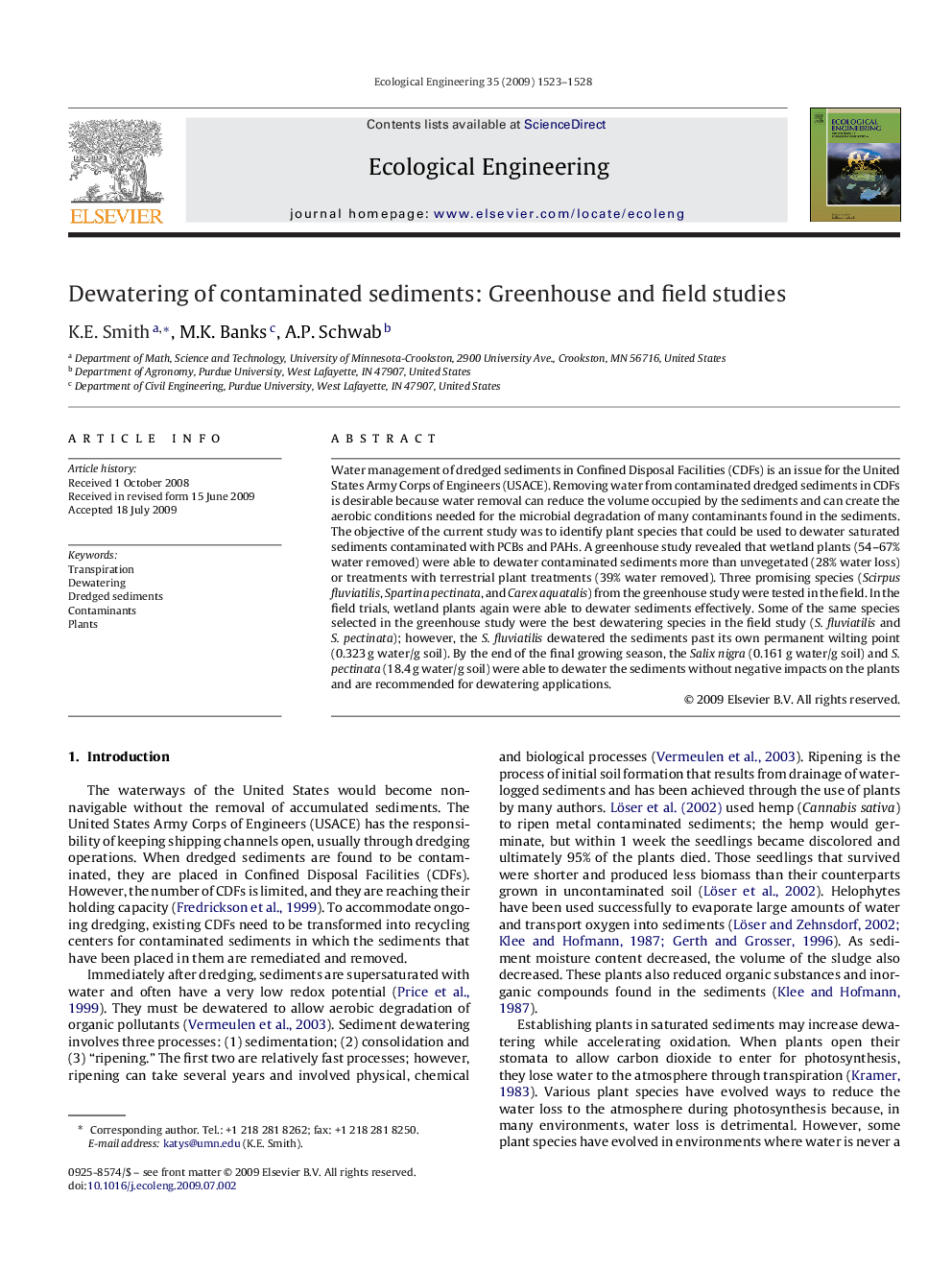| کد مقاله | کد نشریه | سال انتشار | مقاله انگلیسی | نسخه تمام متن |
|---|---|---|---|---|
| 4390730 | 1305190 | 2009 | 6 صفحه PDF | دانلود رایگان |
عنوان انگلیسی مقاله ISI
Dewatering of contaminated sediments: Greenhouse and field studies
دانلود مقاله + سفارش ترجمه
دانلود مقاله ISI انگلیسی
رایگان برای ایرانیان
کلمات کلیدی
موضوعات مرتبط
علوم زیستی و بیوفناوری
علوم کشاورزی و بیولوژیک
بوم شناسی، تکامل، رفتار و سامانه شناسی
پیش نمایش صفحه اول مقاله

چکیده انگلیسی
Water management of dredged sediments in Confined Disposal Facilities (CDFs) is an issue for the United States Army Corps of Engineers (USACE). Removing water from contaminated dredged sediments in CDFs is desirable because water removal can reduce the volume occupied by the sediments and can create the aerobic conditions needed for the microbial degradation of many contaminants found in the sediments. The objective of the current study was to identify plant species that could be used to dewater saturated sediments contaminated with PCBs and PAHs. A greenhouse study revealed that wetland plants (54-67% water removed) were able to dewater contaminated sediments more than unvegetated (28% water loss) or treatments with terrestrial plant treatments (39% water removed). Three promising species (Scirpus fluviatilis, Spartina pectinata, and Carex aquatalis) from the greenhouse study were tested in the field. In the field trials, wetland plants again were able to dewater sediments effectively. Some of the same species selected in the greenhouse study were the best dewatering species in the field study (S. fluviatilis and S. pectinata); however, the S. fluviatilis dewatered the sediments past its own permanent wilting point (0.323Â g water/g soil). By the end of the final growing season, the Salix nigra (0.161Â g water/g soil) and S. pectinata (18.4Â g water/g soil) were able to dewater the sediments without negative impacts on the plants and are recommended for dewatering applications.
ناشر
Database: Elsevier - ScienceDirect (ساینس دایرکت)
Journal: Ecological Engineering - Volume 35, Issue 10, October 2009, Pages 1523-1528
Journal: Ecological Engineering - Volume 35, Issue 10, October 2009, Pages 1523-1528
نویسندگان
K.E. Smith, M.K. Banks, A.P. Schwab,